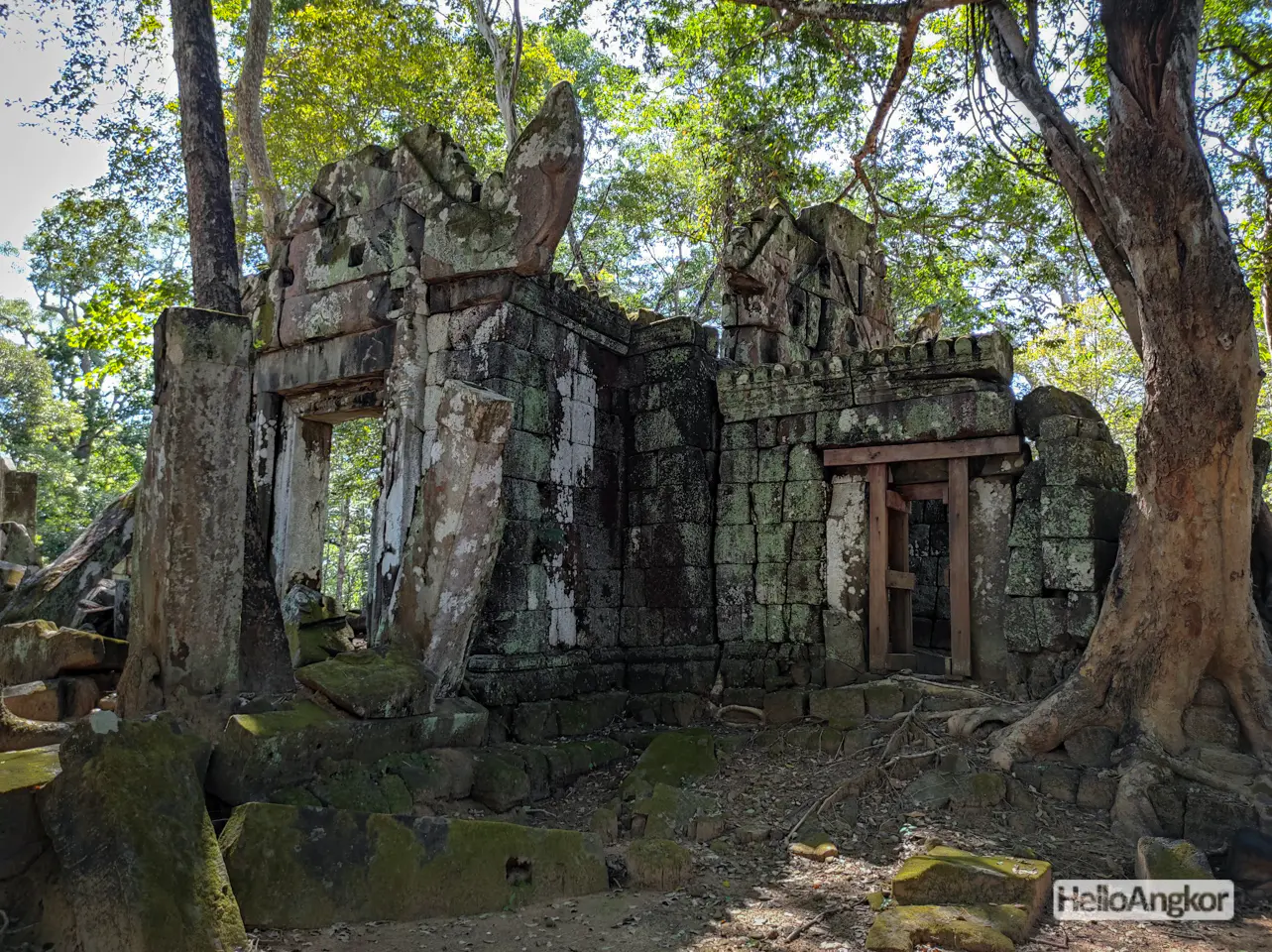- Area: Preah Vihear Province > Kuleaen District > Srayang Commune > Koh Ker Village
- | Type: Ancient Remains & Temples
Also known as Prasat Beng. Koh Ker features rich diversity in its architectural styles and this is another unusual site. The central feature or shrine was a raised sandstone terrace with steps on its east and west sides, and featuring two pedestals. This terrace was preceded by an entrance gopura constructed of laterite with sandstone elements providing a double entry in parallel with the two pedestals of the terrace. The site is quite ruinous but you can still make out the steps of the terrace and see decorated fragments, some possibly of the pedestals.
According to historical notes, a feminine statue was found on the terrace, and nearby the feet of a male statue, and in front of the gopura, a lion statue.
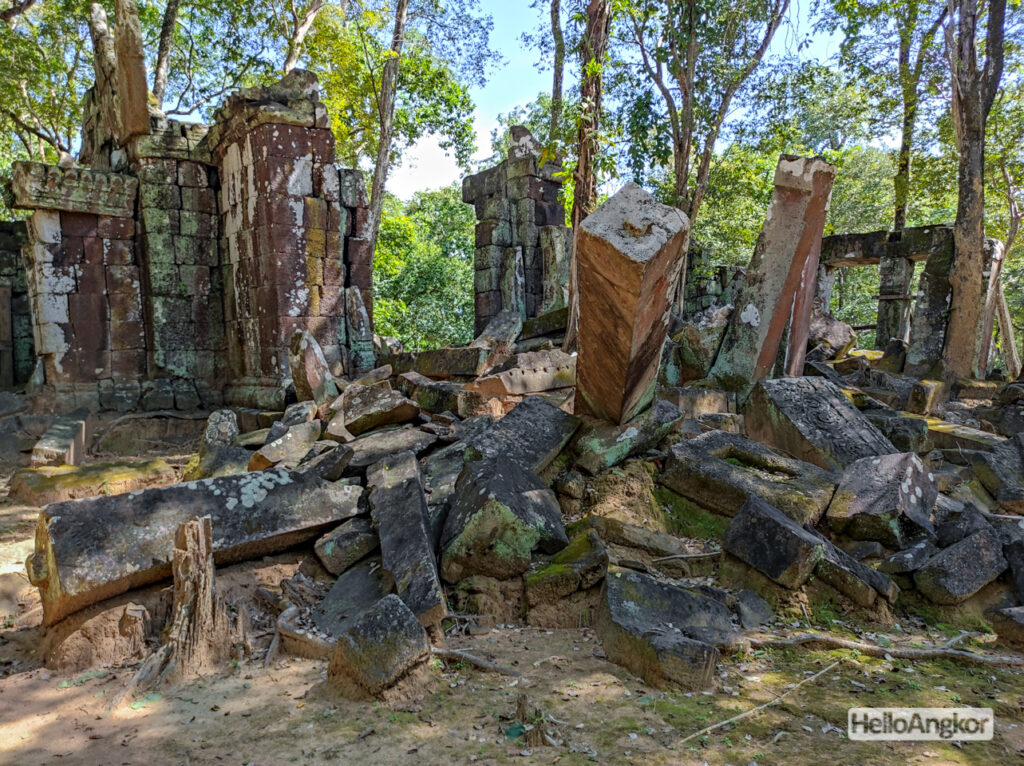

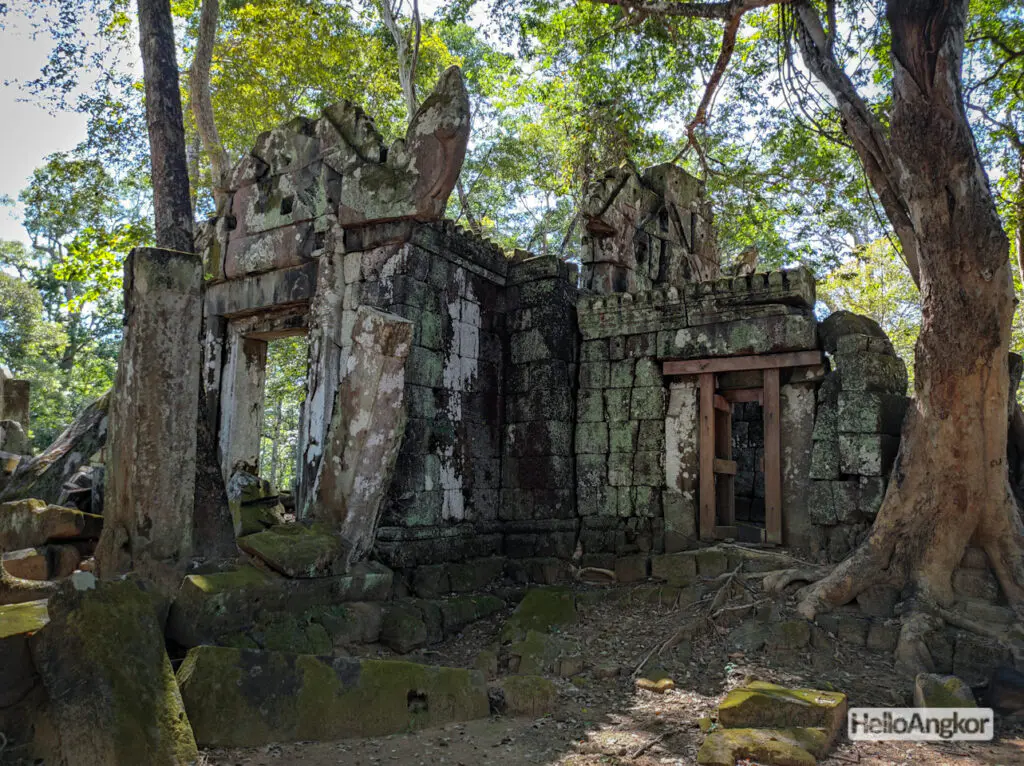

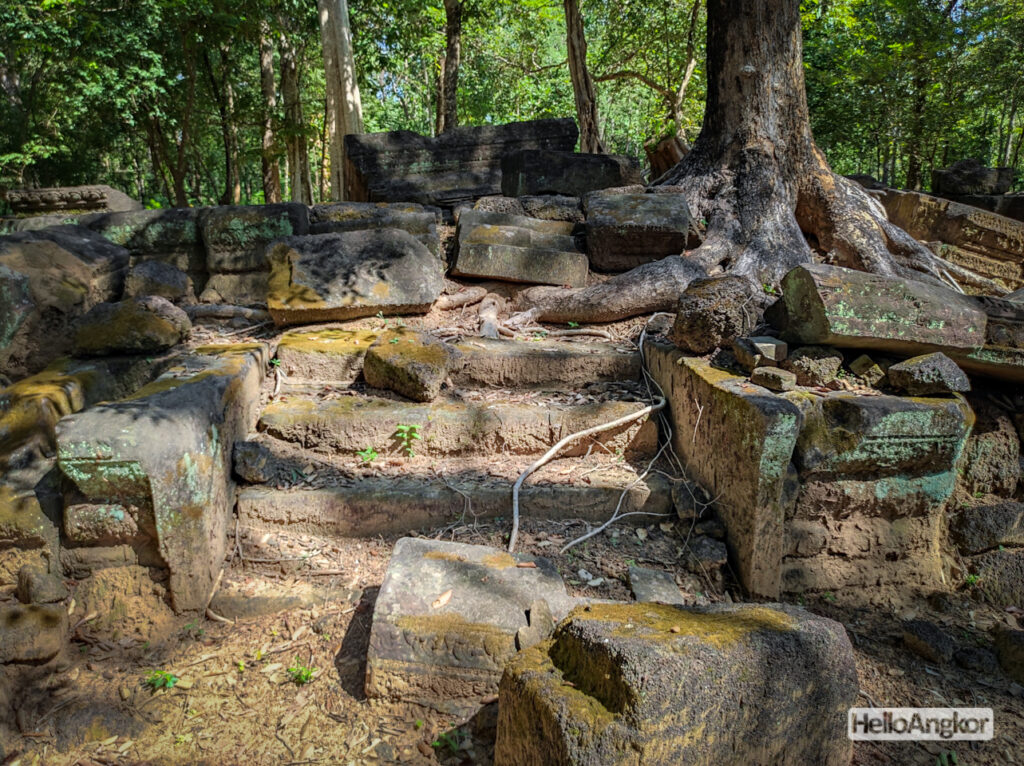
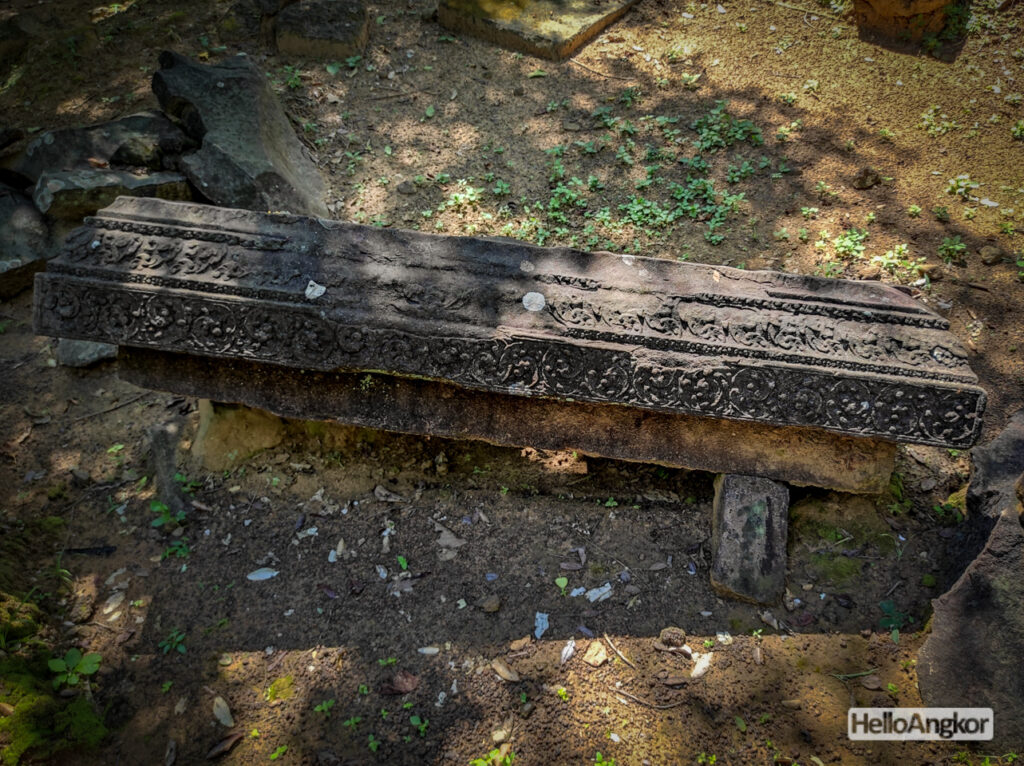
Historical Notes
Henri Parmentier’s description from L’Art khmèr classique , monuments du quadrant Nord-Est, 1939
Temple D 275 (M.H 256)
The only building of this temple D which is still standing – partly, because it is itself very ruined – is a very interesting gopura with a binary arrangement that precedes 50 m an equally double sanctuary; this one was in light construction and only the basement terrace and the altars remain (fig. 8). The light enclosure has left no other trace than the vast gopura which intersects it. The whole is oriented to the West with the deviation of the Rahál.
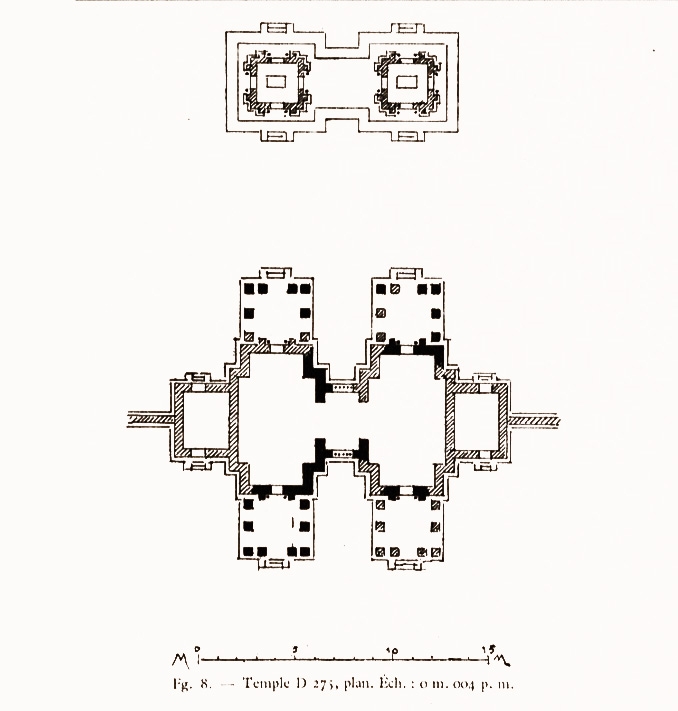
The sanctuary is no longer marked except by its sandstone terrace, provided with two steps both to the East and to the West on each of the two axes, but not to the South and to the North. On this terrace, in the axis of the N. part, we can still see, on the side of the entrance, the W. side, the traces of a door. On the O.-E axes. of the two parts rises each time, at the meeting of the general N.-S. axis, an altar with three divinities whose places are marked only by three mortises aligned North-South. The gopura is made up of two cross-shaped laterite chambers whose arms O.-E. alone are important; the N. and S. arms are only indicated.
The first are opened by large single-framed doors and united by a clearance corresponding to the small common side arm, lit on the main facades O. and E. by a window with balusters. The small end arms are extended by two wings provided with opposite doors which constitute the two side passages, completely independent. The two central rooms are preceded by ordinary porticos with two spans, that is to say with eight pillars, where they opened by doors provided for the usual decorative composition, but remained in spanning. The whole was covered with roofs closed by curved triangular gables. Only the elements that I have marked in black on the attached plan (fig. 8) remain in place, as well as most of the porticoes and a few window balusters that must have existed on the axis; moreover a true lintel, bearing the corresponding mortises, has fallen inside. On the S gable can be seen a beginning of the ordinary wall intended to replace the supposed enclosure of the panels and which was not executed.
In front of the gopura is the remains of a large lion. On the terrace of the double sanctuary remains the vertical half of a statue of a standing woman with a sarong with folded sides and vertical stripes; she has strong breasts, a hollow navel; the head is missing. The statue wore no jewelry. In 1924 there remained besides the feet of another statue and a man’s body.
The binary layout is the outstanding feature of this small set. I know of no other example than the gopura II E. of Pr. Khnà 315, which we will see later.
Map
Site Info
- Site Name: Plae Beng (Pr.) Khmer Name: បា្រសាទផ្លែបេង
- Reference ID: HA12137 | Posted: May 23, 2021 | Last Update: May 4th, 2022
- Other Names: Beng Temple, ប្រាសាទ បេង
- Tags/Group: Koh Ker, pr, rb, Temples
- Location: Preah Vihear Province > Kuleaen District > Srayang Commune > Koh Ker Village
- MoCFA ID: 856
- IK Number: 275

